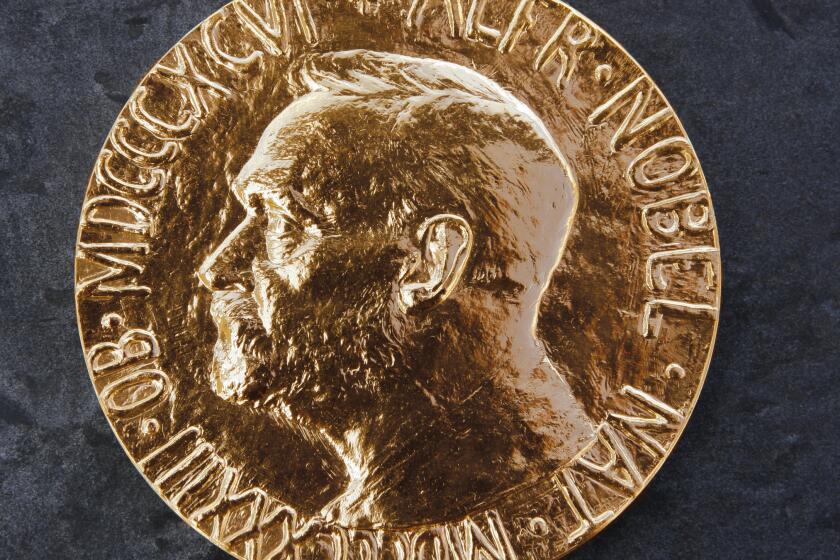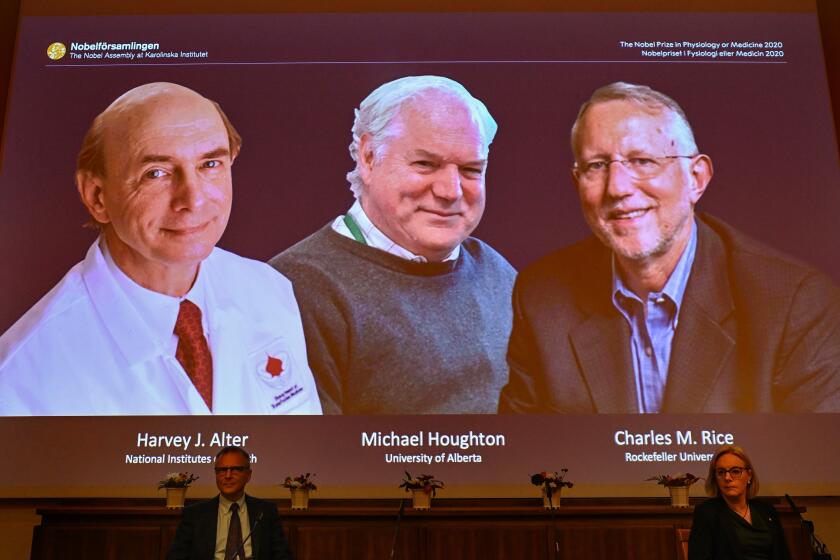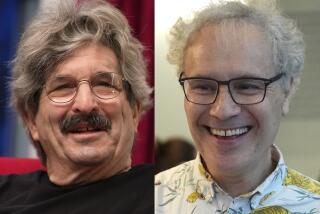Race to find black hole at the center of the Milky Way nets Nobel Prize in physics
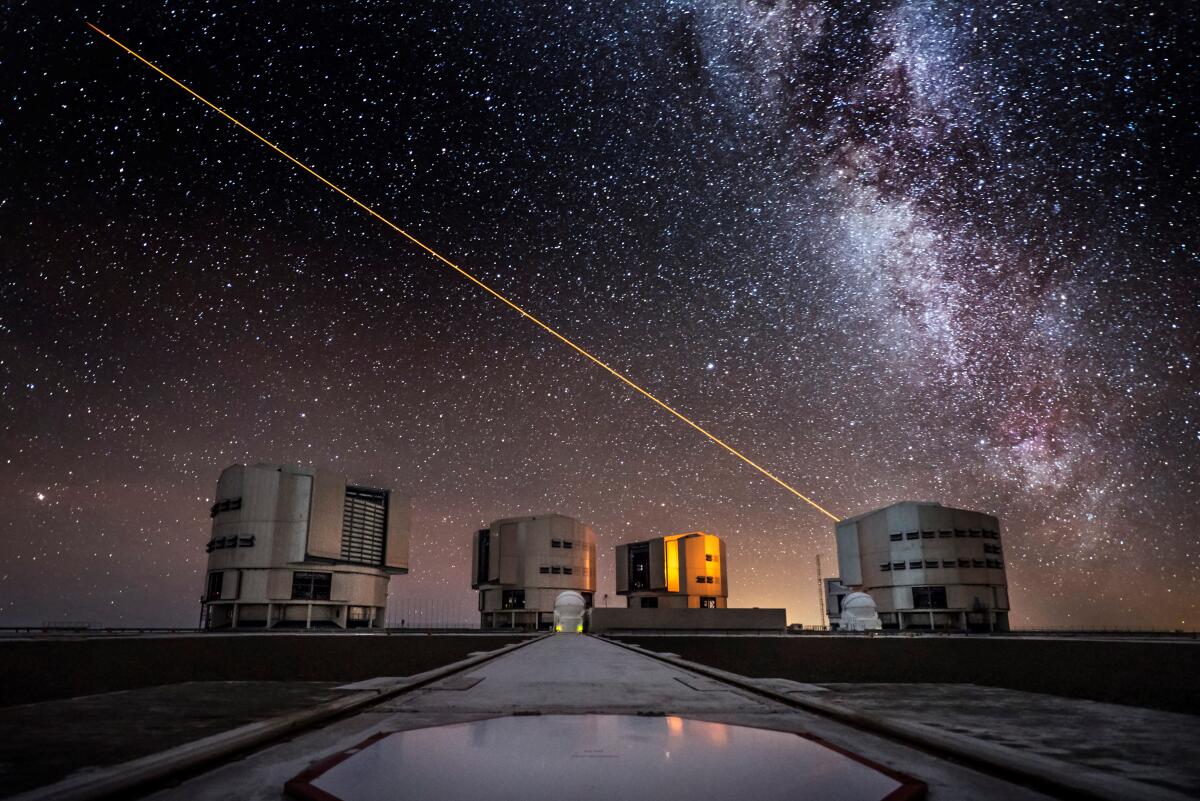
- Share via
It began as a high-stakes race to peer across 26,000 light years of space and find evidence of a supermassive black hole at the center of our Milky Way galaxy.
Leading one team was Reinhard Genzel, an established astrophysicist at the Max Planck Institute for Extraterrestrial Physics in Germany with a part-time appointment at UC Berkeley. His group deployed two giant telescopes operated by the European Southern Observatory in the Chilean desert.
Nearly half a world away, Andrea Ghez, a young assistant professor who had just started her career at UCLA, spent a full year persuading skeptical colleagues that she could produce results. Her team eventually got time with the W.M. Keck Observatory’s twin telescopes at the summit of Hawaii’s Mauna Kea.
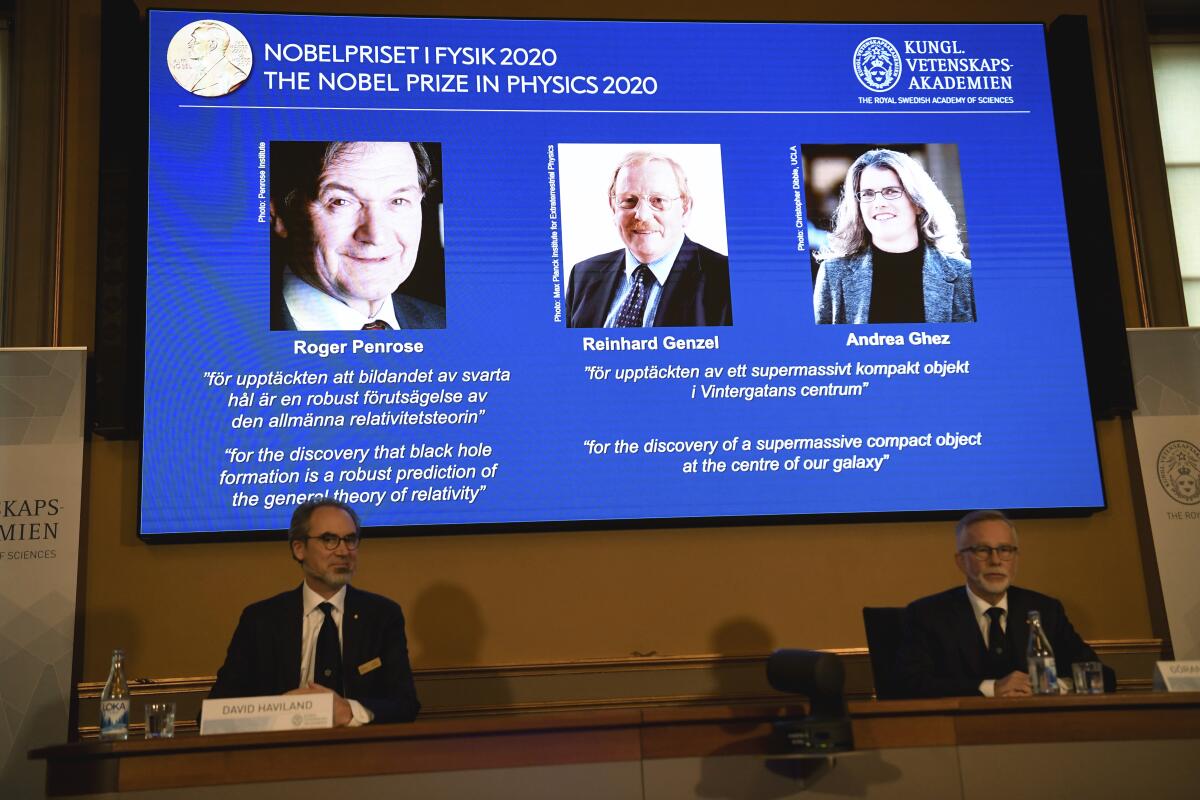
Over two decades, the competition fueled remarkable findings. The two teams churned out paper after paper, sometimes separated by just a few months. In search of any advantage, both groups pioneered new techniques to see through the haze of Earth’s atmosphere and penetrate the gas and dust that obscure much of the galaxy.
Ultimately, their observations of bright stars dancing around a mysterious object known as Sagittarius A* revealed that their movements were guided by the powerful gravity of what could only be a supermassive black hole — an object with a mass of 4 million suns crammed into an area the size of our solar system.
And on Tuesday, it earned both Ghez and Genzel a share of the Nobel Prize in physics.
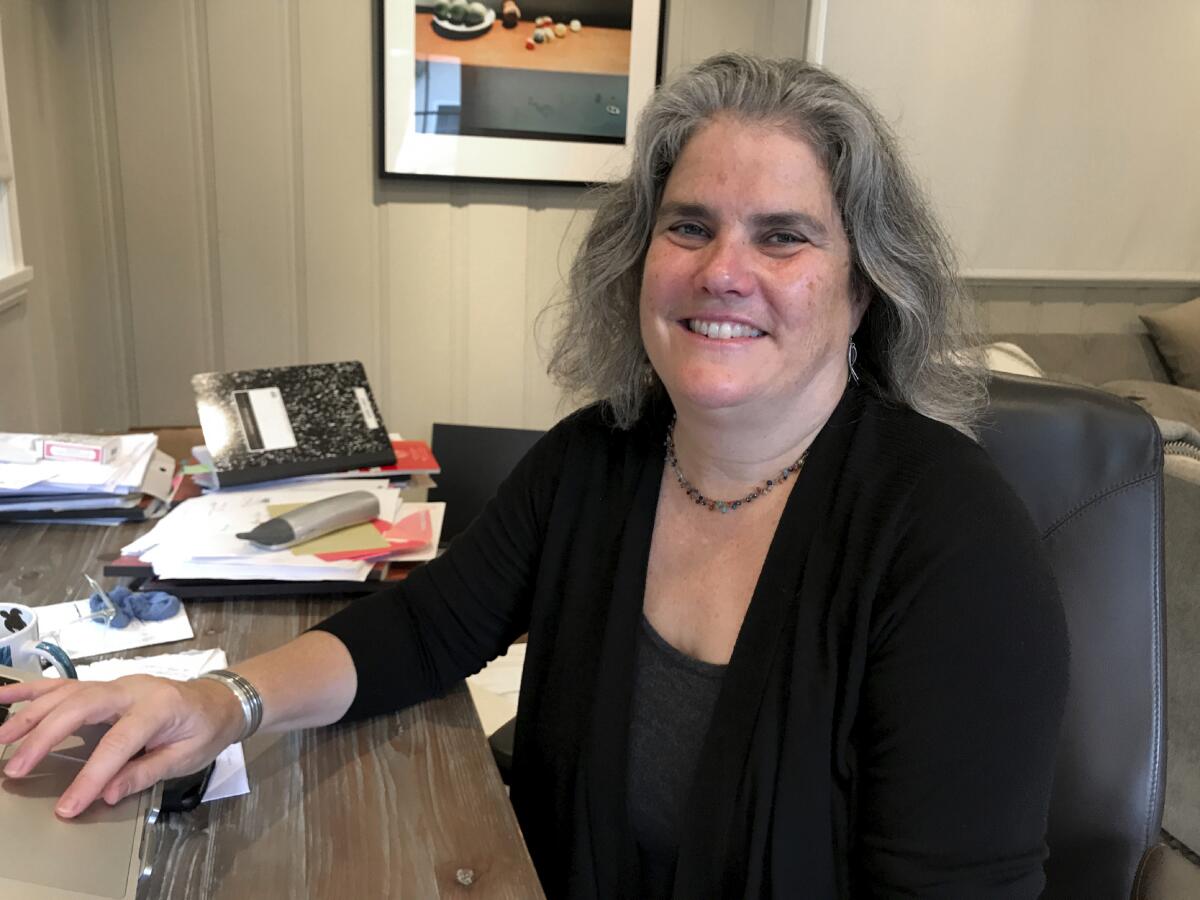
The erstwhile adversaries will share half of the prize money of 10 million Swedish kronor, or more than $1.1 million. The other half will go to Sir Roger Penrose, a professor emeritus at the University of Oxford’s Mathematical Institute who developed new concepts to show that the black holes predicted by Albert Einstein’s general theory of relativity could indeed exist.
Ghez, who is only the fourth woman to win the prize in physics, said that over time, the rivalry between her group and Genzel’s almost started to feel like a collaboration.
“There’s nothing like competition to keep you going, to propel you forward and to get it right,” she said.
Genzel said the contest itself helped persuade other physicists that the black hole results were real.
Several universities lay claim to laureates no matter how tangential the affiliation. The aura of success ‘is serious business’ in academia.
“The scientific audience was in a perfect position to see us perform the same exercise and judge if the outcome was the same,” he said. “It’s the perfect science principle — when two observers agree, then the audience would believe what we saw.”
Daniel Holz, an astrophysicist at the University of Chicago who wasn’t part of either team, said the fact that the two groups used different telescopes with different capabilities added another layer of credibility to their findings.
“It is really reassuring ... that they were really independent, and not buddies but really competitors,” he said.
Their combined efforts provided solid experimental evidence that black holes are more than just a bizarre mathematical consequence of Einstein’s most famous work. Einstein himself didn’t believe black holes could be real.
“They are the most extreme objects in the universe,” Holz said. “The gravity is so strong not even light can escape. These are objects that should not exist in nature.”
But scientists were forced to take the idea seriously in the 1960s after the discovery of quasars. These objects are both extremely bright and incredibly distant, and theorists surmised that the tremendous amount of radiation they emit could only be produced by matter getting sucked into a giant black hole.
Penrose said when he began thinking about black holes, he didn’t start by trying to solve complex equations “because then, you know, it’s too complicated.” Instead, he approached the problem “in visual terms.”
The solution crept into his subconscious as he and a friend crossed a road in London. Their conversation paused as they watched for traffic, then resumed when they reached the other side.
Later, Penrose said, he experienced “this strange feeling of elation” but didn’t know exactly why. He replayed the day in his mind and realized that crossing the road had given him the idea of a critical boundary that, once passed, could not be escaped. It was, he said, “a point of no return.”
“I went back to my office and I sketched out a proof,” he recalled Tuesday. It was published in Physical Review Letters in 1965.
Decades were to pass before the advent of telescopes powerful enough to observe the goings-on in the center of the galaxy.
Ghez and Genzel focused on Sagittarius A* (pronounced Sagittarius A star), long known by astronomers as a mysterious source of radio waves. Some researchers had theorized that it could be a supermassive black hole, but they didn’t know for sure. At the time, scientists didn’t even know if supermassive black holes were real.
“At the beginning the question was, ‘Is there a supermassive black hole at the center of our galaxy, and by extension, can you prove they really exist?” Ghez said.
Two Americans and one Briton share the Nobel Prize in medicine for their discovery of the hepatitis C virus.
To find out, she and her colleagues observed the motion of about 100 stars crowded around Sagittarius A* to determine how they were affected by its gravity.
“They moved very fast,” said Jessica Lu, one of Ghez’s former graduate students who is now a professor of astrophysics at UC Berkeley. While most objects in the sky take millions of years to complete an orbit, these stars did so “on the scale of a human lifetime,” she said. Ghez’s favorite star, known as S2 or S-02, has a maximum velocity of 4,350 miles per second.
The speedy stars were key, said Mark Morris, a UCLA colleague of Ghez’s who has been collaborating with her since 1995.
“We were seeing velocities at several percent the speed of light,” he said. That was a strong sign that Sagittarius A* was a supermassive black hole, the team reported in 2000. “I have to say we were fairly blown away.”
Within a few years, both teams had strengthened their cases enough that any other alternative explanation could be excluded.
They also demonstrated that if a supermassive black hole existed in our garden-variety galaxy, they were sure to be commonplace in the universe, Ghez said.
But there is still much more to learn. These days, astrophysicists are using Sagittarius A* as a laboratory to explore how stars and gases behave in the presence of such an extreme object, and looking for places where Einstein’s theory might break down.
Over the years, Morris said, each group has spurred the other to bigger and better discoveries.
“The competition has been intense from the word go,” he said. “Both groups were keenly aware that the other group was right on their tail or right ahead of them, depending on who was ahead at that moment. It kept both of us honest.”
But Genzel said he would like to see the two teams work together more directly.
“I tried to convince Andrea that we should go from a competitive stance ... to a collaborative stance,” he said Tuesday. “We have exchanged wonderful emails today and will have a COVID-distance champagne event together in the next few days.”
